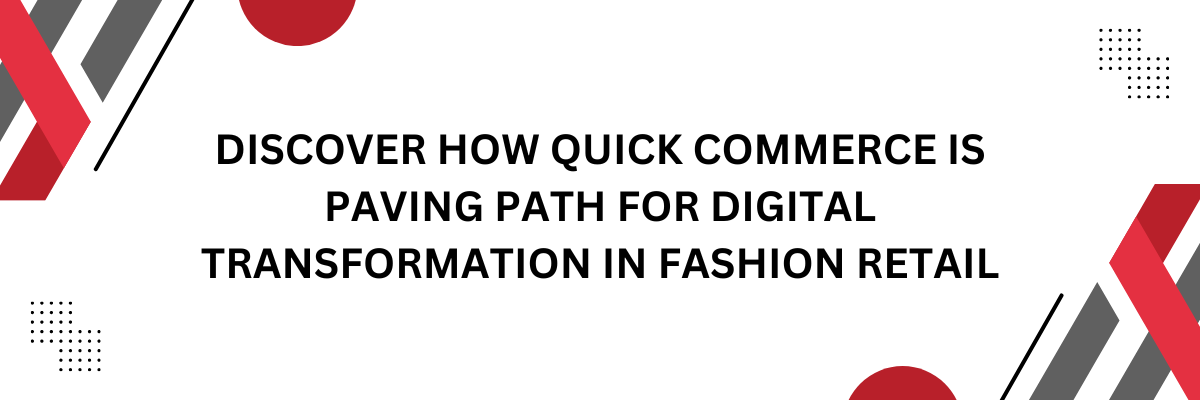
Quick Commerce (Q-commerce) refers to the rapid delivery of goods and services to consumers through digital platforms. In the context of fashion retail, Q-commerce is playing a significant role in driving digital transformation. Here are several ways in which Quick Commerce is paving the path for digital transformation in the fashion retail industry:
-
Faster Delivery Times: Q-commerce emphasizes ultra-fast delivery times, often within hours or even minutes. This aligns with the modern consumer's desire for instant gratification, especially in the fashion industry where trends change rapidly. Quick delivery times contribute to enhanced customer satisfaction and loyalty.
-
Mobile-First Approach: Q-commerce heavily relies on mobile platforms, allowing customers to browse, select, and purchase items using their smartphones. This mobile-first approach aligns with the increasing trend of mobile shopping, providing a seamless and convenient experience for users.
-
Data-Driven Personalization: Q-commerce platforms leverage customer data to provide personalized recommendations. By analyzing past purchases, browsing history, and preferences, these platforms can offer tailored suggestions, creating a more engaging and relevant shopping experience for consumers.
-
Integration of Technology: Digital transformation in fashion retail through Q-commerce involves the integration of various technologies such as AI, machine learning, and data analytics. These technologies enable retailers to optimize inventory management, enhance customer experiences, and streamline operations.
-
Efficient Supply Chain Management: Q-commerce relies on an efficient and agile supply chain to meet the demands of rapid delivery. By utilizing technology and data analytics, fashion retailers can optimize their supply chain processes, reducing lead times, minimizing waste, and improving overall operational efficiency.
-
Enhanced Customer Experience: Q-commerce platforms focus on creating a seamless and user-friendly shopping experience. This includes intuitive interfaces, easy navigation, and hassle-free checkout processes. Such enhancements contribute to an overall positive customer experience, driving customer satisfaction and loyalty.
-
Inventory Management Optimization: With the help of real-time data analytics, fashion retailers can optimize inventory management. Q-commerce allows for better control over stock levels, reducing the risk of overstocking or stockouts. This optimization leads to cost savings and increased profitability.
-
Adoption of Sustainable Practices: Digital transformation in the fashion industry through Q-commerce also involves an increased focus on sustainability. Retailers can use technology to track and communicate the environmental impact of their products, responding to the growing consumer demand for eco-friendly and socially responsible options.
-
Global Reach and Market Expansion: Q-commerce enables fashion retailers to reach a global audience without the need for physical stores in every location. This global reach expands market opportunities and allows businesses to cater to diverse consumer preferences and trends.
In summary, Quick Commerce is playing a crucial role in the digital transformation of the fashion retail industry by focusing on rapid delivery, mobile-first approaches, data-driven personalization, technological integration, supply chain optimization, improved customer experiences, inventory management, sustainability, and global market expansion. Embracing these aspects helps fashion retailers stay competitive and relevant in an ever-evolving digital landscape.



